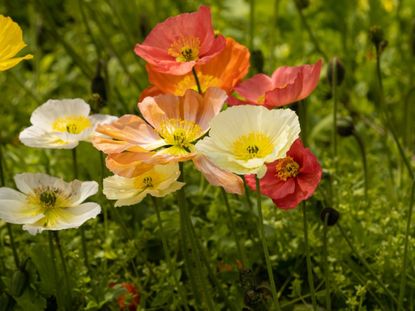Learn About Cold Weather Plants For Zones 2-3


USDA plant hardiness zones, developed by the U.S. Department of Agriculture, were created to identify how plants fit into different temperature zones – or more specifically, which plants tolerate the coldest temperatures in each zone. Zone 2 encompasses areas such as Jackson, Wyoming and Pinecreek, Alaska, while zone 3 includes cities like Tomahawk, Wisconsin; International Falls, Minnesota; Sidney, Montana, and others in the northern part of the country. Let’s learn more about the plants that grow in cold climates like these.
Challenge of Gardening in Zones 2-3
Gardening in zones 2 and 3 means dealing with punishing cold temperatures. In fact, the lowest average temperature in USDA hardiness zone 2 is a frigid -50 to -40 degrees F. (-46 to -40 C), while zone 3 is a whopping 10 degrees warmer.
Cold Weather Plants for Zones 2-3
Gardeners in frigid climates have a particular challenge on their hands, but there are a number of tough but lovely plants that grow in cold climates. Here are some suggestions to get you started.
Zone 2 Plants
- Lead plant (Amorpha canescens): Lead plant is a rounded, shrubby plant with sweet smelling, feathery leaves and spikes of tiny purple blooms.
- Serviceberry (Amelanchier alnifolia): Serviceberry, also known as Saskatoon serviceberry, is a hardy ornamental shrub with showy, fragrant blooms, tasty fruit, and lovely autumn foliage.
- American cranberry bush (Viburnum trilobum): American cranberry bush is a durable plant that produces clusters of big, white, nectar-rich flowers followed by bright red fruit that lasts well into winter – or until birds gobble them up.
- Bog rosemary (Andromeda polifolia): Bog rosemary is a mounding groundcover that reveals narrow, bluish green leaves and clusters of small white or pink, bell-shaped blooms.
- Iceland poppy (Papaver nudicaule): Iceland poppy displays masses of blooms in shades of orange, yellow, rose, salmon, white, pink, cream, and yellow. Each bloom appears atop a graceful, leafless stem. Iceland poppy is one of the most colorful zone 2 plants.
Zone 3 Plants
- Mukgenia nova ‘Flame’ displays deep pink blooms. Attractive, toothed leaves create a stunning display of bright color in autumn.
- Hosta: Hosta is a hardy, shade loving plant available in a wide range of colors, sizes, and forms. The tall, spiky blooms are butterfly magnets.
- Bergenia: Bergenia is also known as heartleaf bergenia, pigsqueak, or elephant ears. This tough plant boasts tiny pink blooms on erect stems arising from clusters of glossy, leathery leaves.
- Lady fern (Athyrium filix-feminia): Lady fern is one of several sturdy ferns that are classified as zone 3 plants. Many ferns are perfect for a woodland garden and lady fern is no exception.
- Siberian bugloss (Brunnera macrophylla): Siberian bugloss is a low-growing plant that produces deep green, heart-shaped leaves and small, eye-catching blooms of intense blue.
Gardening tips, videos, info and more delivered right to your inbox!
Sign up for the Gardening Know How newsletter today and receive a free download of our most popular eBook "How to Grow Delicious Tomatoes."

A Credentialed Garden Writer, Mary H. Dyer was with Gardening Know How in the very beginning, publishing articles as early as 2007.